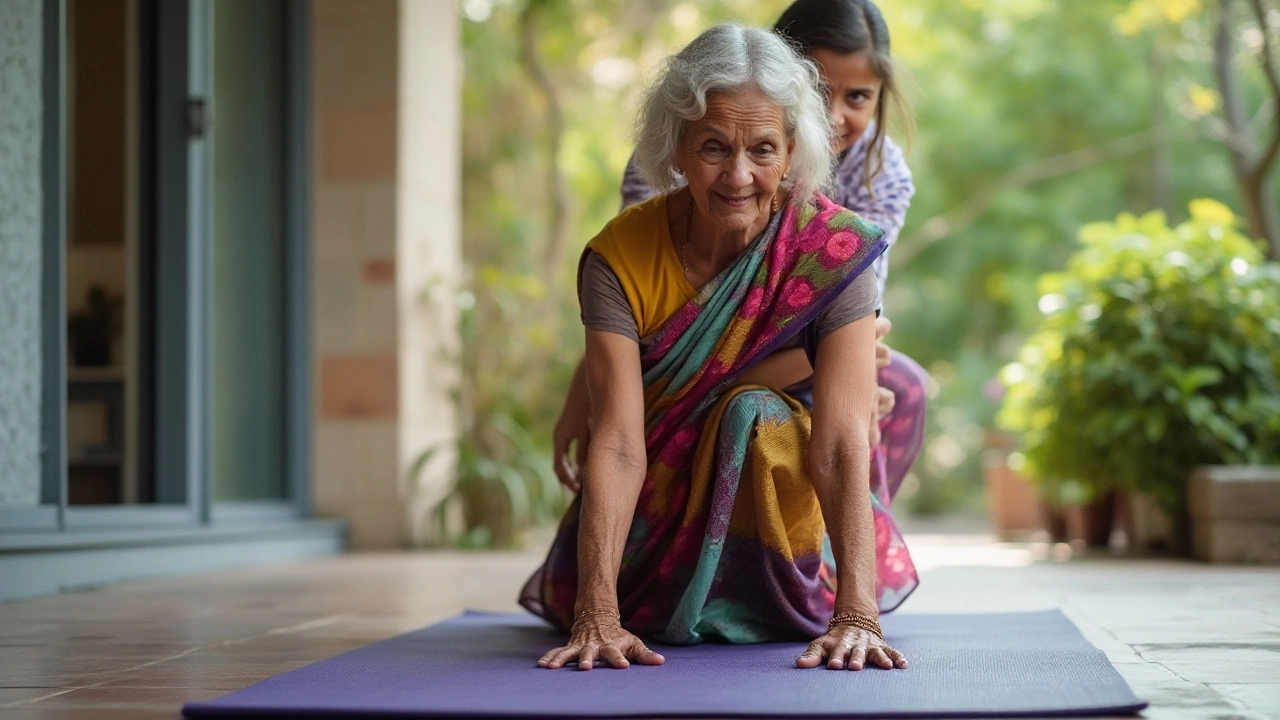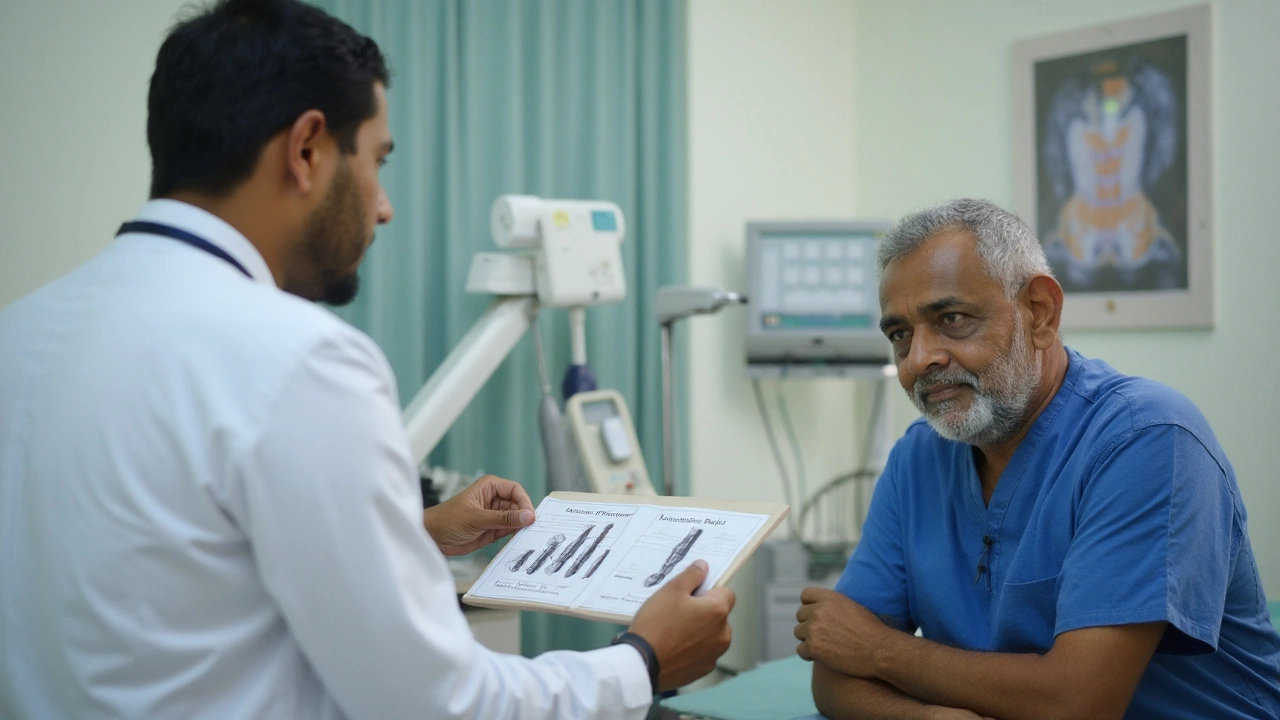Many people with compromised knees dream of regaining unrestricted movement after a knee replacement. Yet, there's a cloud of doubt lingering over one specific motion—kneeling. It's a bit like learning to ride a bicycle again; it feels strange at first, but not strictly impossible.
There’s more to it than just the mechanics of bending your knee. Factors like the type of knee implant, the condition of the surrounding muscles, and the process of rehabilitation all play their roles. It's a journey that blends advancements in medical science with personal determination.
As we delve deeper, we'll unravel what makes kneeling such a complex issue post-replacement. Let’s walk through this curious topic together, shedding some light on what you can realistically expect after your surgery.
- Understanding Knee Replacement and Its Impact
- Factors Influencing Post-surgery Kneeling
- Expert Tips for Kneeling After Surgery
- Patient Experiences and Advice
Factors Influencing Post-surgery Kneeling
After going through a knee replacement, you might wonder how the surgery will change your life, especially when trying to kneel. There are several important factors that influence whether or not you’ll be able to get down on one knee comfortably. First, the type of knee implant used during your surgery plays a significant role. Modern implants are designed with movement in mind, and some even closely mimic the natural movement of your knee joint, allowing more flexibility.
The recovery process is another critical component. It's essential to follow your physical therapist's guidelines closely, as they are tailored to strengthen not only your knee but the surrounding muscles and tendons, too. Neglecting this part of recovery could mean a longer time before you see any improvement. Just as crucial is the time you dedicate to these exercises, progressively getting your body used to different movements.
Your pre-surgery condition can’t be overlooked either. For example, if you had limited mobility for years before getting a knee replacement, it's likely going to take more effort to regain the full range of motion. Additionally, individual variations in healing and pain perception can influence outcomes. Some people naturally heal faster and have a higher pain tolerance, which can make the entire process feel much smoother.
"A big part of the success in post-surgery kneeling comes from the mindset of the patient," says Dr. Julie Marks, an orthopedic specialist. "Patients who are determined and actively participate in their recovery usually find themselves kneeling comfortably sooner."
Moreover, lifestyle choices can either help or hinder progress. Maintaining a healthy weight can alleviate unnecessary pressure on your new knee, helping you kneel with less discomfort. Smokers might face harder challenges because smoking affects blood flow, impairing healing. Meanwhile, managing expectations is key—knowing that everyone's journey is unique might just give you peace of mind.
Finally, consider the environment you're practicing kneeling in. If the ground is hard or slippery, it could discourage you from attempting due more pain or fear of injury. Using mats or soft surfaces in the beginning stages of practicing kneeling can make a world of difference. So, as much as modern medicine will aid your recovery, the attention and effort you invest play equally pivotal roles.

Expert Tips for Kneeling After Surgery
Embarking on the journey to kneel again after a knee replacement can feel daunting, but with the right guidance, it is within reach. The first crucial tip is to communicate openly with your surgeon and physical therapist. They're the architects of your recovery roadmap, each piece of advice they impart playing a significant role in your progress. These professionals have handled countless cases and can tailor a rehabilitation plan that accommodates your unique needs and circumstances. They’ll provide you with exercises that protect your new joint while building the strength and flexibility needed to attempt kneeling.
A gradual reintroduction to kneeling can start as early as three months post-surgery, depending on individual recovery rates. Success hinges on patience, as this is not a race. Utilize cushions or padded surfaces initially to ease pressure on the knee, which can help mitigate any discomfort or fear of injury. Remember, adaptation to kneeling involves not only the bionic-like joint but also the ligaments and muscles adjusting to their new roles. Building confidence through practice in a safe setting is key, using props like a chair for support, and always ensuring a comfort-first approach.
Physical Therapy's Role
Your physical therapist will likely introduce you to strength-building exercises early in recovery. Backed by research, these exercises focus on enhancing the quadriceps and hamstrings, critical players in knee stability and motion. Studies have indicated that patients who regularly engage in such functional exercises report less discomfort when kneeling post-surgery. An often-overlooked aspect is proprioception exercises, vital for teaching your body to recognize and respond to its position in space, thereby improving your capacity to kneel.
"Innovation in patient recovery shows promising impacts on post-knee replacement mobility," shares Dr. Jennifer Lang, renowned orthopedic surgeon. "Our approach isn't merely mechanical; it's about empowering patients with the confidence to embrace their new reality."
Understanding the nature of your knee recovery aids this process. Adjustments in your postures, such as placing weight on the shin rather than the knee, can further reduce discomfort. Keep an eye on swelling, as this can impede your progress. Applying ice after performing kneeling exercises can help manage potential inflammation. Regular follow-ups with your healthcare team ensure you're on the right track, adjusting your regimen as necessary.
Building Confidence Through Repetition
Ultimately, the paramount advice is to practice regularly while listening to your body. It's a balance of diligence and attentiveness. Developing muscle memory through repetition allows for cognitive and physical comfort with kneeling motions. Consistent practice reinforces not only the physical muscles but builds mental resilience and confidence. Encouragement from support groups or rehabilitation peers can provide motivation and shared experiences that enhance your journey. Utilize communities, both local and online, for shared tips and success stories, reinforcing the knowledge that you're not alone in this process.
For some, regular kneeling might still be elusive due to specific personal challenges. In these cases, alternate methods such as leveraging adaptive furniture or assistive devices can offer a compromised yet comfortable solution. Hence, personalizing your approach post-surgery cannot be overstated as each body is a universe in its own right. Armed with knowledge and expert guidance, many can confidently reclaim the ability to kneel without the looming shadow of fear.

Patient Experiences and Advice
When people revisit life after knee replacement, their stories resemble the chapters of a shared human journey. For many, the path is a mosaic of determination, resilience, and occasional triumphs intertwined with challenges. Conversations about kneeling often surface in support groups and forums, where patients openly share their experiences. It's within these dialogues that the power of collective wisdom truly shines. For instance, one patient, Amelia, recounted her initial struggle with kneeling post-surgery. After months of physiotherapy emphasizing strength-building and flexibility, she persevered. Her advice to others? 'Trust the process and listen to your body — it knows best.' Such anecdotes remind us of the varied nature of recovery, where patience plays a pivotal role.
Within these stories, specific patterns and insights emerge. Some patients highlight the importance of setting realistic goals, using adaptive tools like kneeling pads or supportive cushions during daily activities. Their narratives often include valuable advice on prioritizing mobility exercises to regain confidence over time. As one patient humorously shared, "It’s like teaching an old dog new tricks; it takes time, but the effort feels rewarding." Another essential aspect is the emotional journey, where the collective support of family, therapists, and fellow patients becomes an indispensable asset. This network often transforms challenges into shared victories, instilling a sense of belonging and hope.
Specific challenges arise from diverse factors such as age, health status, and adherence to post-operative guidelines. Consequently, no two stories are identical. To navigate these complexities, it becomes essential to curate tailored advice. Patients often emphasize the value of consistent communication with healthcare providers, encouraging open dialogues regarding pain management, recovery targets, and realistic expectations. By taking an active role in their rehabilitation, individuals forge unique paths toward success, adapting strategies that resonate most with them.
To encapsulate these insights, it’s useful to look at data underscoring common experiences. In a recent survey conducted by a leading orthopedic clinic, 73% of patients expressed improved satisfaction when integrating advice from peers into their recovery routine. Notably, those implementing specialized exercise regimens reported greater confidence levels and less discomfort while kneeling. For health enthusiasts, leveraging such data provides quantifiable benchmarks for success, enabling informed decisions for personal progress. These collective stories and findings not only empower individuals to reclaim their mobility but also underscore the inherent strength found in shared human experiences.





